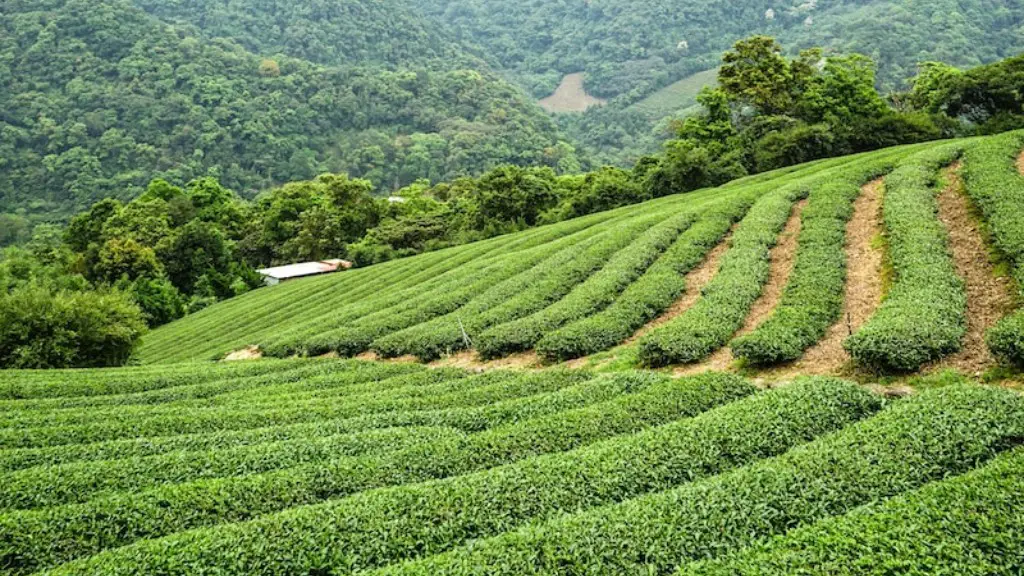India, with its vast and varied terrain and climatic conditions, is known for its diverse agricultural practices. Agriculture in India is a major source of livelihood for its people, accounting for about 17% of the country’s total workforce. Agriculture forms the backbone of the Indian economy, with more than half of India’s people dependent directly or indirectly on agriculture and allied activities for their livelihood. India produces a wide range of agricultural products – such as wheat, rice, pulses, oilseeds, fruits and vegetables, spices, tea, coffee, jute and other fibers – and is the world’s largest producer of many of these products. The country’s agricultural output is managed by the Ministry of Agriculture and Farmers Welfare.
In India, agricultural practices are very varied and highly interdependent on regional factors, such as soil type, climate and available resources. Farming practices vary in each region, but the dominant practices are generally categorized into three: traditional agriculture, rabi agriculture and kharif agriculture. Traditional agriculture involves subsistence farming, with the majority of land being used for the production of food for the local population. Rabi agriculture is the cultivation of short-term crops that require frequent irrigation, such as wheat and rice, during a specific time of the year. Kharif agriculture involves the cultivation of long-term crops that require less frequent irrigation, like millets and pulses, during a specific season. In addition, there are a variety of modern agricultural practices that are used in India, such as crop rotation, high-value crop production, integrated pest management, genetically modified crops and advanced irrigation systems.
Agricultural development in India has been hindered by the lack of availability of resources and technology, and the inability of the farmers to use them effectively. There are also several challenges related to water availability and soil quality, due to over-exploitation and pollution. Poor infrastructure, such as lack of access to irrigation, market linkages and other inputs, are other major hindrances. However, the government has taken several steps to address these issues, such as launching the Pradhan Mantri Krishi Sinchai Yojana, a scheme designed to provide access to irrigation facilities to all rural farmers, and implementing various other agricultural schemes.
In order to achieve food security, the government of India has been implementing various programmes and schemes to boost agricultural production and productivity in the country. These include programmes such as the National Food Security Mission, the National Horticulture Mission, the National Mission on Grain Crop Production and the National Mission on Milk Production. Additionally, the government has also been promoting agricultural research and providing credit and other support to farmers. These measures have helped to improve the agricultural sector in India and make it more productive and sustainable.
Agriculture in India is also increasingly becoming more mechanized, with the use of advanced technologies such as drip irrigation and precision farming systems. There has also been an increase in the number of farmers who have access to credit, thereby increasing their ability to invest in technology and further improve agricultural practices. However, despite the government’s efforts, there is still a long way to go in terms of infrastructure, access to resources and technology, and the overall development of the agricultural sector.
Agro-Economy of India
Agriculture has a significant impact on India’s economy. It is the main source of income for about 60 percent of the population and contributes significantly to the national Gross Domestic Product (GDP). The sector has the potential to create more employment opportunities and reduce poverty levels in rural areas. The Indian government has been taking various measures to strengthen the agricultural sector, such as providing incentives to farmers, providing access to credit, and promoting research and science-based farming.
The agricultural sector in India has seen considerable growth in recent years, with increased investments in technology, seeds, and infrastructure. India’s agricultural production has been higher than the global average over the past decade, with productivity increasing by an average of 3.77 percent from 2009-10 to 2018-19. This growth was mainly due to the adoption of modern techniques and the introduction of high-yielding crop varieties.
Agriculture in India employs a wide range of different practices, including traditional farming, rabi and kharif farming, use of genetically modified organisms, and irrigation systems. With the advancement of technology and the availability of resources, modern agricultural practices have become increasingly important. In order to ensure the sustainability of India’s agricultural output, it is necessary to promote research, increase investment in modern agricultural techniques, and improve access to credit.
Agriculture and Environment
Agriculture in India is highly dependent on local environmental conditions, including water availability, soil type, and climate. Thus, efforts have been made to adopt or develop practices that are sustainable and do not have a negative impact on the environment. This includes the adoption of conservation tillage, organic farming, reduced-tillage, and integrated pest management, among many others.
The environmental impact of agriculture has been a major concern in India. Unsustainable practices such as excessive use of chemicals, water and energy can lead to soil degradation and depletion of natural resources. The government has taken steps to combat these impacts and to promote sustainable practices. This includes measures to conserve and use water efficiently, promote renewable energy sources, and adopt soil conservation measures.
In addition, there is an increasing emphasis on organic farming in India. Organic farming adopts practices such as crop rotation, soil conservation, and use of natural fertilizers and pesticides. It helps to conserve soil fertility, reduce pollution, and improve the health of local ecosystems. With the support of the government, organic farming is being increasingly promoted in the country, leading to its increased adoption.
Agricultural Marketing
The marketing of agricultural products is one of the most important aspects of Indian agriculture. It involves linking farmers with buyers and providing access to inputs and services. India has an established network of agricultural traders, intermediaries, and agents, who facilitate the marketing of agricultural products. However, there are certain challenges that need to be addressed, such as the lack of standardization in prices, the lack of quality control, and the exploitation of farmers by traders.
In order to address these challenges, the government has taken initiatives such as the creation of the Electronic National Agriculture Market (e-NAM), which is an online platform that enables farmers to easily access markets across different states. It also provides price information, ensures quality control, removes intermediaries and creates a level playing field for farmers.
Furthermore, the government has introduced a number of other measures to promote agricultural marketing, such as the Agriculture Export Policy, which seeks to boost exports, and the National Agricultural Market (NAM), which aims to facilitate the marketing of agricultural produce at the local level. Additionally, the government has also implemented programmes such as the Rashtriya e-Marketing Mission, which is designed to create a common platform for farmers and buyers to connect.
Agricultural Policies
Agricultural policies in India usually aim to increase agricultural production, promote farmers’ welfare, and ensure sustainable development of the sector. There are various policies in place, such as the National Food Security Mission, which seeks to increase foodgrain production and ensure food security for the country, the Pradhan Mantri Fasal Bima Yojana, which provides crop insurance to farmers, and the Krishi Kalyan Abhiyan, which seeks to promote sustainable rural development.
In addition, the government has also taken measures to promote modern agricultural technologies. This includes the implementation of programmes such as the National Mission on Sustainable Agriculture, which seeks to promote the use of modern agricultural techniques, and the Rashtriya Krishi Vikas Yojana, which provides financial assistance to farmers for the development and adoption of new technologies.
The government has also taken steps to improve rural infrastructure, such as provision of power, roads and communications. This has enabled improved access to markets and inputs, while also eliminating the exploitation of farmers by intermediaries. In addition, the government has also implemented various social security schemes in order to protect rural families from economic exigencies.
Agriculture and Climate Change
Climate change is one of the greatest challenges facing the agricultural sector in India. Its effects, such as increased temperatures, water scarcity and extreme weather conditions, are already being felt across the country. These have led to a decrease in agricultural yields, an increase in water scarcity and an overall decrease in the productivity of land.
The government has taken a number of measures to address the impacts of climate change on agriculture. These include the promotion of climate-resilient agriculture, the adoption of water conservation and management programmes, the strengthening of research and extension services, and the promotion of renewable energy sources.
In addition, the government has also launched several climate-related programmes such as Pradhan Mantri Fasal Bima Yojana, which focuses on crop insurance, and the Mahatma Gandhi National Rural Employment Guarantee Scheme, which aims to provide employment of rural households. There have also been efforts to promote agroforestry, reduce the use of chemical fertilizers, and promote organic farming.
Climate change is likely to lead to further agricultural losses and decreased yields in the future. Thus, there is a need for policies that focus on mitigating and adapting to climate change and its impacts on agriculture. Such policies should not only protect farmers and their livelihoods, but also ensure the overall sustainability of the sector.





